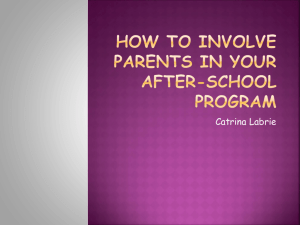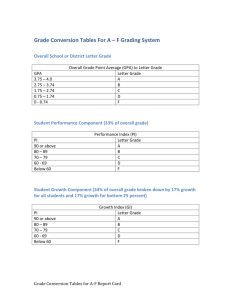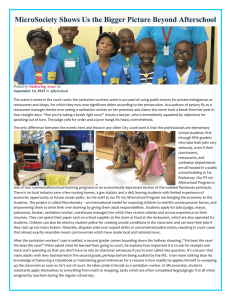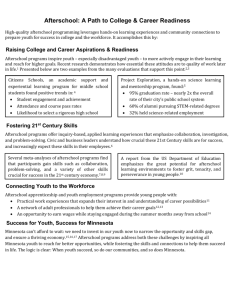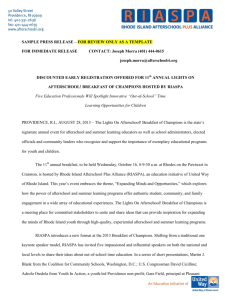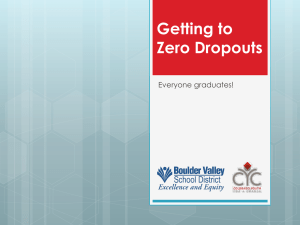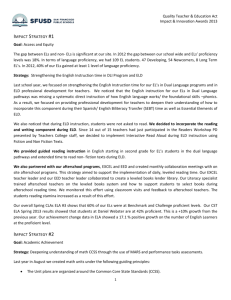The Benefits of Academic Intervention Programs
advertisement
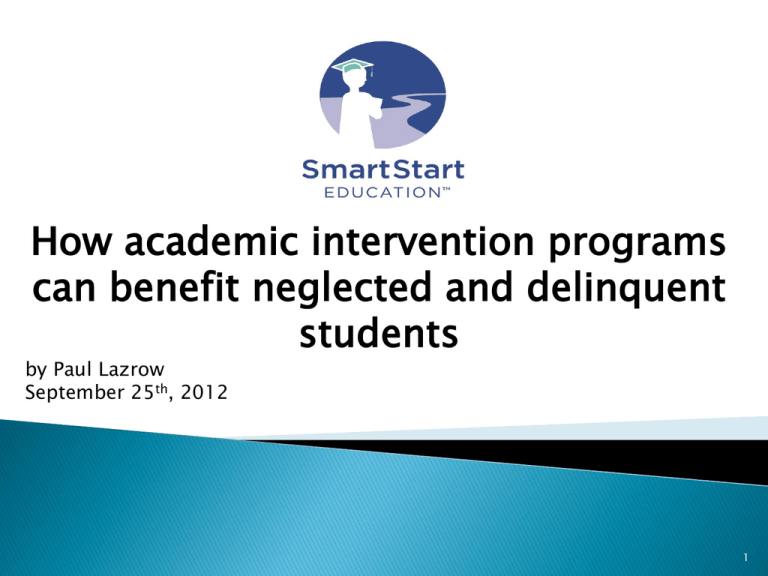
How academic intervention programs can benefit neglected and delinquent students by Paul Lazrow September 25th, 2012 1 1. What is an academic intervention program and what should it accomplish? 2. Why are academic interventions needed? 3. What makes a quality intervention program? 4. How can academic intervention programs benefit neglected and delinquent students? 2 Well-implemented, quality afterschool programs have the potential to support and promote healthy learning and development. Moreover, there is a research warrant for continued public and private support for afterschool investments. 3 4 o o o Programs that give academic support to children beyond the regular classroom Often these programs are funded through Federal dollars/programs like Title 1 Programs tailored to meet the needs of individual students 5 o Focus to raise student achievement o Employ research-proven strategies o Keep group sizes small o Assess and report the results of student assessments back to the classroom teacher 6 7 Education is the number one social justice issue of our times These service programs are needed to help students who might otherwise fall through the cracks of large public school systems 8 o o o Less than two-thirds of students who enroll in a four-year college in Pennsylvania will earn a bachelor's degree within six years Among students pursuing an associate degree, only one in three will graduate within three years. One in three high school graduates who attend Pennsylvania's public universities and community colleges need remedial courses math and literacy 9 o The US ranks 21st out of 26th OECD counties in H.S. Graduation. o The US loses more than a $100 billion/year in lost revenue, lower economic activity and increased social service due to our high dropout rate. (We loose their talent) o A HS Dropout will cost the nation $260,000 more in their lifetime that a graduate. Source: Alliance for Excellent Education 10 11 o o o Offers opportunities for skill building and mastery Fosters a culture of continuous improvement that includes ongoing assessment and targeted plans Intentional relationship building with host schools, participants and families 12 o o A strong, experienced Site Coordinator who is supported by a trained and supervised staff. Student-level data sharing among schools and afterschool/summer programs in order to better meet the needs of students and assess progress. 13 14 Academic Intervention Programs are one key component to Dropout Prevention Programs 15 One statistically valid study, out of the many studies out there, showed: o o o Students who drop out of school are more likely to end up as criminal 3 1/2 times more likely than high school graduates to be arrested and 8 times as likely to be in jail or prison The incidence of institutionalization problems among young high school dropouts was more than 63 times higher than among young four year college graduates. 16 o o 3.8 million kids started High School this year and about 25% will not make it to graduation day Students drop out because: Bored Missed too much school Failed 9th grade Girl’s: pregnancy (3 out of 4 will end up on public assistance) 17 o Who is dropping out: Latinos Blacks Whites Asian/Pacific Islanders o 47% 43% 17% 10% What is a “drop outs future: More likely to abuse drugs Live in poverty Go to jail Unemployment rate is nearly double 18 o Cost to Society Lost Wages Taxable Income Health Care Welfare Incarceration $319 Billion /year 19 There are so many ways to figure out how the drop out rate relates to people ending up in jail. But as one superintendent said: o "We could spend all of our time trying to figure out the real numbers, but we're better off trying to mitigate the problem.” 20 1. 2. 3. 4. 5. 6. Improved test scores and grades Higher graduation rates Improved school attendance and engagement in learning Promotes self-concept and healthy choices Helps families and encourages parental participation Keeps children safe and healthy 21 o Children who regularly attended high-quality afterschool programs over two years had 20% increase in math scores and 12% increase in language arts scores compared to peers who were unsupervised afterschool. (the Promising Afterschool Programs Study) 22 o H.S. students enrolled in the program for three or more semesters had higher graduation rates and lower dropout rates than similar students not in the program. (Chapin Hall's study of Chicago's After School Matters) 23 o a reduction in absences among participants, from 6.4 days per school year at baseline to 2.19 days per school year at follow-up. (the Boys & Girls Clubs' national Project Learn) 24 The Promising Programs evaluation showed participation in afterschool programs is linked to “reductions in behavior problems among disadvantaged students" including o significant reductions in aggressive behaviors with peers o reductions in misconduct o reduced use of drugs and alcohol 25 Parents in the TASC study said that the program helped them balance work and family life: o 94% said the program was convenient o 60% said they missed less work than before because of the program o 59% said it supported them in keeping their job o 54% said it allowed them to work more hours o 31% of principals reported that TASC greatly increased parents' attendance at school events o 15% reported that it increased parents' attendance at parent-teacher conferences 26 o o 30 percent less likely to participate in criminal activities than their peers Researchers estimated that for every dollar invested, the program saves the city $2.50 in crime-related costs. (An evaluation in Los Angeles) 27 Civic Marshall Plan: Target of 90% Graduation rate by 2020. (4th graders now) ◦ ◦ ◦ ◦ 4th grade students need to read well Middle School they have great attendance Transform the worst performing High Schools (Dropout Factories) H.S. the students need to have a clear pathway to adult success (college, trade school..) This is a shift towards a culture of caring and excellence and the Common Core is an example We can identify the patterns of student who is statistically likely to drop out and with these early warning systems we can use interventions to provide support 28 o o o o CLOSE The Achievement Gap - Stop the summer slide with an academic programs that includes sports, arts, music, technology, field trips – “summer enrichment” ? Engagement ? 29 They don’t see a connection to what they wanted to be in life and what they were learning in school.” ◦ ◦ ◦ ◦ ◦ Bad home situations Pregnancy Bullying Fall too far behind academically Don’t see that value of education 31

